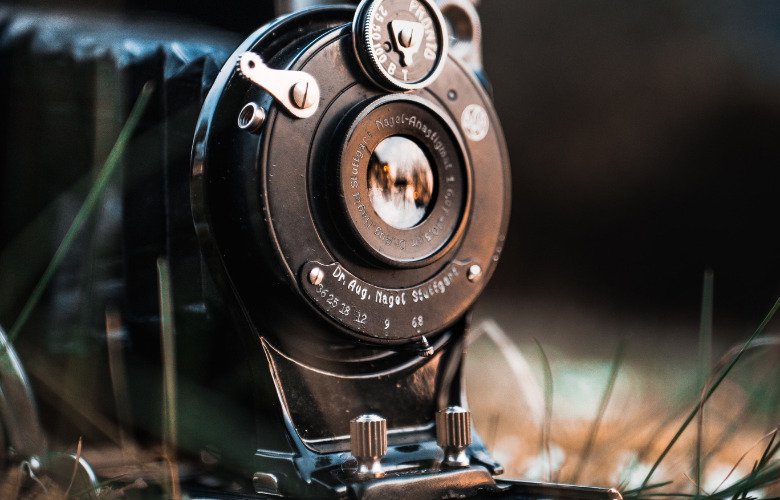
Some years ago, I studied photography at the Zurich University of the Arts. From that time, I still treasure the insights into the history of photography I was given. And the many discussions on the meaning and impact of the medium we would have. If this is something that interests you, too, here the books which were recommended to us during our studies. They truly gave me a great perspective and overview over this fascinating, visual art form.
Centuries of advances in chemistry and optics, including the invention of the camera obscura, set the stage for the world’s first photograph.
In 1826, French scientist Joseph Nicephore Niepce took that photograph, titled View from the Window at Le Gras, at his family’s country home.
From then on, the photographic process improved rapidly. At first photography was mainly used to record exotic scenery and portraits.
It was not until the 1940ies though that photography was officially considered an art form in the United States. An opinion which was then soon shared by art critics worldwide.
Mainly, it is American photographer and art promoter Alfred Stieglitz, husband of renowned painter Georgia O’Keefe, who is credited with getting photography accepted as an art form.
Then, as time and technology progressed, photography became a medium which took over ever more aspects of our daily lives. Nowadays, we wouldn’t even be able to begin to imagine a world without photography.
This has, over the years, also led philosophers as well as artists to think more deeply about what photography means for us, and how it can be used and abused to get a message across.
If you want to learn more about the history of photography as well as the philosophical discussions surrounding it, I highly recommend all of these books:
From the back cover:
“The History of Photography has long been recognized as a classic contribution to the study of the art of photography. Beaumont Newhall has achieved the most sensitive and thorough history of the medium, revealed through the eyes of those photographers who have shaped our vision and the understanding of our society through photography.”
“Using more than two hundred illustrations of works by major photographers such as Hill and Adamson, O’Sullivan, Cameron, Atget, Emerson, Stieglitz, Weston, Adams, Lange, and Evans, the author presents a fascinating, comprehensive study of the significant trends and developments in the medium since the first photographs in 1939.”
On Photography is a 1977 collection of essays by Susan Sontag. It originally appeared as a series of essays in the New York Review of Books between 1973 and 1977.
In the book, Sontag expresses her views on the history and present-day role of photography in capitalist societies as of the 1970s. Sontag discusses many examples of modern photography. Among these, she contrasts Diane Arbus’s work with that of Depression-era documentary photography commissioned by the Farm Security Administration.
Camera Lucida (French: la chambre claire) is a short book published in 1980 by the French literary theorist and philosopher Roland Barthes. It is simultaneously an inquiry into the nature and essence of photography and a eulogy to Barthes’ late mother. The book investigates the effects of photography on the spectator (as distinct from the photographer, and also from the object photographed, which Barthes calls the “spectrum”).
In his essay A Short History of Photography (1931), Walter Benjamin did not seek to chronicle the development of photography. Rather, he contemplated the important consequences of the invention of photography for the global culture: “At about the same time as the formation of the technology for reproduction, the conception of great works was changing. One can no longer view them as the productions of individuals. They have become collective images, so powerful that capacity to assimilate them is related to the condition of reducing them in size.”
The Work of Art in the Age of Mechanical Reproduction (1935), by Walter Benjamin, is an essay of cultural criticism which proposes and explains that mechanical reproduction devalues the aura (uniqueness) of an objet d’art. That in the age of mechanical reproduction and the absence of traditional and ritualistic value, the production of art would be inherently based upon the praxis of politics. Written during the Nazi régime (1933–1945) in Germany, Benjamin’s essay presents a theory of art that is “useful for the formulation of revolutionary demands in the politics of art” in a mass-culture society.
From the back cover:
“Spanning the entire history of the medium, from its early development to current practice, and providing a focused understanding of the cultural contexts in which photographers have lived and worked throughout, this remains an all-encompassing survey.”
“Mary Warner Marien discusses photography from a truly global viewpoint and looks at a wide-ranging collection of images through the lenses of art, science, travel, war, fashion, the mass media, and individual photographers.”
“In addition to representing the established canon of Europe and the United States, key work from Latin America, Africa, India, Russia, China, and Japan is also included. Professional, amateur and art photographers are all discussed, with Portrait boxes devoted to highlighting important individuals and Focus boxes charting particular cultural debates.”
“A rich and vivid account of the history of photography placed in an essential cultural context, this indispensable book shows how photography has charted, shaped and sharpened our perception of the world.”
Celebrating Nature and Cultural Heritage: Andorra Land Art
A Short History of the Land Art / Earth Art Movement


Liam Klenk was born in Central Europe and has since lived on four continents. Liam has always been engaged in creative pursuits, ranging from photography and graphic design, to writing short stories and poetry, to working in theatre and shows. In 2016, Liam published his first book and memoir, 'Paralian'.
Read Full Profile© 2021 TheatreArtLife. All rights reserved.

Thank you so much for reading, but you have now reached your free article limit for this month.
Our contributors are currently writing more articles for you to enjoy.
To keep reading, all you have to do is become a subscriber and then you can read unlimited articles anytime.
Your investment will help us continue to ignite connections across the globe in live entertainment and build this community for industry professionals.